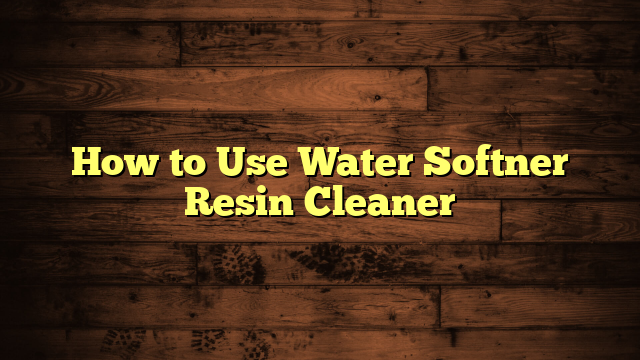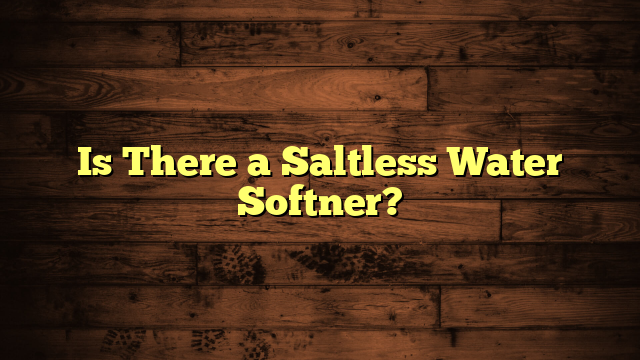Is a Water Softner a Poet System?
Did you know that nearly 85% of U.S. households have hard water? While you might think a water softener automatically qualifies as a POET system, the reality is more nuanced. A water softener specifically targets hardness, but a POET system addresses overall water quality at the entry point of your home. This raises important questions about their compatibility and effectiveness together. So, what does this mean for your water treatment choices?
Key Takeaways
- A water softener can be a component of a POET system, but it is not a complete POET system by itself.
- POET systems treat water at the entry point using various methods, including water softeners for hardness removal.
- Water softeners specifically address hardness, while POET systems manage overall water quality by removing various contaminants.
- POET systems are customizable to regional water quality issues and may incorporate multiple treatment methods beyond just water softening.
- Integrating a water softener within a POET system enhances efficiency by addressing both hardness and other impurities in the water.
Understanding Water Softeners
Many homeowners encounter issues with hard water, which can lead to scale buildup and reduced appliance efficiency. Water hardness is primarily caused by high concentrations of calcium and magnesium ions. When these minerals accumulate, they create deposits that not only damage pipes but also hinder the performance of appliances like dishwashers and water heaters.
To combat these issues, you can install a water softener. This system initiates the softening process by exchanging harmful calcium and magnesium ions with sodium or potassium ions. As water flows through the softener's resin beads, these beads attract and hold onto the hardness ions while releasing the softer sodium or potassium ions into the water supply. This exchange effectively reduces water hardness, providing you with cleaner, softer water for everyday use.
Regular maintenance of your water softener is essential for peak performance. It's important to check the salt levels periodically and clean the resin beads as needed.
Function of Reverse Osmosis Systems
While water softeners tackle the issue of hard water by removing calcium and magnesium, reverse osmosis (RO) systems take a different approach to improve water quality. RO systems utilize a semi-permeable membrane to filter out a wide range of contaminants, ensuring you get cleaner, safer drinking water.
Here's a quick overview of the key benefits of reverse osmosis:
| Aspect | Details |
|---|---|
| Filtration Efficiency | Removes up to 99% of impurities |
| Contaminants | Eliminates lead, chlorine, and more |
| Water Taste | Improves overall taste and odor |
| Maintenance | Requires minimal upkeep |
| Cost-Effectiveness | Long-term savings on bottled water |
The reverse osmosis benefits extend beyond just taste; it effectively reduces harmful substances, enhancing water safety. With high filtration efficiency, you can be confident that your drinking water meets health standards. As water quality becomes increasingly important, understanding these systems can help you make informed choices for your household. By investing in an RO system, you're investing in your health and well-being.
Key Differences Explained
Understanding the key differences between water softeners and reverse osmosis systems is vital for selecting the right water treatment solution for your needs.
Water softeners primarily address hard water issues by removing minerals like calcium and magnesium through ion exchange. This process greatly improves water quality by reducing scale buildup in pipes and appliances, thereby enhancing efficiency and longevity.
On the other hand, reverse osmosis systems focus on purifying water by removing a broad spectrum of contaminants, including salts, chemicals, and heavy metals. They utilize a semi-permeable membrane to filter out undesirable substances, resulting in cleaner, safer drinking water.
While both treatment methods serve important roles, their applications differ markedly. Water softeners are ideal for households experiencing hard water problems, while reverse osmosis systems are better suited for those concerned about specific contaminants and overall water quality.
If you're looking to improve water taste and safety, a reverse osmosis system might be your best bet. Conversely, if you're dealing with scaling issues, a water softener could be the right choice.
Ultimately, understanding these differences will help you make an informed decision that best meets your water treatment needs.
Benefits of Water Softeners
Water softeners offer significant benefits that can enhance your daily life.
By reducing mineral buildup, they improve the longevity of your appliances, ensuring they operate efficiently for longer periods.
Furthermore, softened water can lead to healthier skin and hair, providing a noticeable difference in your personal care routine.
Improved Appliance Longevity
One notable benefit of installing a water softener is the improved longevity of your household appliances. Hard water contains minerals like calcium and magnesium that can accumulate in appliances, leading to scale buildup. This buildup decreases appliance efficiency, forcing them to work harder and consume more energy. When you soften your water, you greatly reduce the presence of these minerals, promoting ideal appliance performance.
With soft water, you'll notice a marked reduction in maintenance needs. Appliances such as dishwashers, water heaters, and washing machines experience less wear and tear, as scale and mineral deposits are minimized. This maintenance reduction not only saves you time but also extends the life cycle of these devices, allowing you to avoid frequent repairs or replacements.
In the long run, investing in a water softener can be economically beneficial. By enhancing appliance efficiency and lessening the need for maintenance, you can maximize the return on your investment.
Enhanced Skin and Hair
Many homeowners notice significant improvements in their skin and hair quality after installing a water softener. The primary benefit lies in the reduction of hard minerals, like calcium and magnesium, which can negatively affect skin hydration and hair texture.
When you shower with softened water, it allows for better cleansing and rinsing, eliminating soap scum and residue that can dry out your skin and hair. Softened water promotes enhanced skin hydration by allowing your skin to absorb moisture more effectively. This can lead to a noticeable reduction in dryness, flakiness, and irritation, especially for those with sensitive skin.
Regarding hair texture, the absence of hard minerals means that your hair can retain its natural oils, resulting in softer, shinier, and more manageable hair.
Moreover, using gentle shampoos and conditioners with softened water further maximizes these benefits, as they can penetrate the hair more effectively without the interference of harsh minerals.
Ultimately, the change to softened water not only enhances the overall quality of your skin and hair but also simplifies your personal care routine, making it more effective and enjoyable.
Benefits of Reverse Osmosis
Reverse osmosis (RO) offers a multitude of benefits, making it a popular choice for water purification. One of the primary advantages of RO systems is their ability to greatly enhance water quality. By employing advanced filtration methods, RO effectively removes contaminants such as heavy metals, chlorine, and dissolved solids, resulting in cleaner and safer drinking water.
You'll appreciate how RO systems can improve the taste and odor of your water, which is often compromised by impurities. Additionally, these systems require minimal maintenance compared to other filtration methods, providing a convenient solution for households.
The compact design of most RO units allows for easy installation under your kitchen sink, saving space while delivering high-quality water.
Moreover, reverse osmosis is environmentally friendly. By reducing the need for bottled water, it helps decrease plastic waste. With a reliable RO system, you'll not only guarantee the safety of your drinking water but also contribute to sustainable practices.
The Concept of POET Systems
POET systems, which stands for Point of Entry Treatment, are designed to address water quality issues at the source.
These systems typically consist of several components, including filtration and disinfection technologies, tailored to specific contaminants.
Understanding how POET systems function and their applications in water treatment can help you make informed decisions about your water quality management.
Definition of POET Systems
Typically, a POET system refers to an all-inclusive approach for managing and treating water quality, particularly in areas with high levels of contaminants. The acronym POET stands for Point of Entry Treatment, which means the system is designed to treat water at the point it enters a home or facility. This method guarantees that all water used for drinking, cooking, and bathing meets health standards.
In a POET system, various treatment methods may be employed based on the specific contaminants detected in the water supply. These methods can include filtration, reverse osmosis, and chemical disinfection, among others. Each method targets specific impurities, guaranteeing that the water is safe for consumption and use.
Moreover, POET systems can be customized to address unique water quality issues in different regions. For instance, if you're dealing with high levels of iron or manganese, specialized filters can be integrated into the system.
Components of POET Systems
Understanding the components that make up a POET system is essential to grasping how it effectively treats water at the entry point. POET systems typically consist of several important component types, including filtration units, disinfection systems, and softeners. Each component plays a specific role in enhancing the overall system efficiency.
Filtration units remove sediments and particulate matter, ensuring clean water for your household. Disinfection systems, often employing UV light or chemical methods, eliminate harmful microorganisms, providing safe drinking water. Water softeners address hardness by removing calcium and magnesium ions, which can lead to scale buildup in pipes and appliances.
The integration of these component types is crucial; they work in tandem to optimize water quality. For instance, a well-functioning filtration unit can improve the effectiveness of the disinfection system by reducing the load of contaminants.
Furthermore, maintaining each component is important for system efficiency. Regular checks and timely replacements keep your POET system running smoothly, ensuring that you always receive the best quality water.
Applications in Water Treatment
Implementing a POET system in water treatment can considerably enhance the quality and safety of water for residential and industrial use.
By integrating various treatment methods, you can effectively address specific water quality issues that may arise. A POET system offers a tailored approach, guaranteeing that contaminants are removed and the water meets safety standards.
Here are three key applications of POET systems in water treatment:
- Filtration: Advanced filtration methods, such as reverse osmosis or activated carbon, can target specific contaminants, improving overall water quality.
- Disinfection: Utilizing ultraviolet (UV) light or chlorine treatments guarantees pathogens are eliminated, providing safe drinking water.
- Softening: Water softeners reduce hardness levels, preventing scale buildup in plumbing and appliances, ultimately prolonging their lifespan.
Can Water Softeners Be POET Systems?
While water softeners primarily focus on removing hardness minerals from water, they can indeed function as part of a POET (Point of Entry Treatment) system. By integrating a water softener into a POET system, you can address multiple contaminant types at once, enhancing overall water quality.
Different water softener types, such as ion-exchange and salt-free systems, can be selected based on your specific needs. An ion-exchange water softener uses sodium to replace hardness minerals, effectively softening your water. Salt-free systems, on the other hand, condition water without adding sodium, appealing to those concerned about salt intake.
POET system features typically include filtration, disinfection, and, of course, water softening. This multi-barrier approach guarantees that water entering your home isn't only free of hardness minerals but also cleansed of harmful contaminants.
By incorporating a water softener, you optimize the POET system's efficiency, resulting in better-tasting water and prolonged appliance life.
Ultimately, combining these systems allows you to create an all-encompassing solution for water treatment, making it a wise investment for your household.
Choosing the Right System for You
When it comes to selecting the right water treatment system for your needs, it's important to evaluate factors like water quality, budget, and specific contaminants present in your water supply.
Understanding the various system types and softening methods will help you make an informed choice.
Here are three key considerations:
- Water Quality Analysis: Test your water to identify hardness levels and specific contaminants, such as chlorine or heavy metals. This helps determine the best softening method, be it ion exchange, reverse osmosis, or another approach.
- Budget Constraints: Evaluate both initial installation costs and ongoing maintenance expenses. Some systems may offer lower upfront costs but could incur higher operational expenses over time.
- Space Requirements: Consider the physical space available for your system. Some softeners are compact, while others may require more extensive plumbing modifications.
Frequently Asked Questions
Can Water Softeners Remove Heavy Metals From Water?
Water softeners primarily focus on ion exchange to remove hardness minerals, but they aren't effective at removing heavy metals. For improved water quality, consider additional filtration systems specifically designed to target those contaminants effectively.
Are There Maintenance Costs Associated With Water Softeners?
Maintaining a water softener isn't rocket science, but you'll face costs. You'll need to monitor maintenance frequency and regularly replenish salt usage, ensuring peak performance and longevity of your system for years to come.
How Long Does a Typical Water Softener Last?
A typical water softener has an average lifespan of 10 to 15 years. Proper maintenance can enhance softener longevity, ensuring peak performance and reducing the need for early replacements, ultimately saving you time and money.
Can I Install a Water Softener Myself?
Ever thought about tackling a DIY plumbing project? You can install a water softener yourself, but make certain you follow the manufacturer's instructions carefully and understand plumbing basics to avoid costly mistakes during water softener installation.
Do Water Softeners Affect Water Taste?
Water softeners can improve water quality by reducing hardness minerals like calcium and magnesium. This often leads to taste improvement, making the water smoother and more palatable, which enhances your overall drinking experience.
Conclusion
To sum up, while a water softener isn't a POET system on its own, integrating one into a POET setup can transform your home's water quality from ordinary to extraordinary. Imagine stepping into a world where every drop of water is perfectly soft, free from contaminants, and meets the highest health standards. By choosing the right combination, you can turn your home into a sanctuary of purity, where not a single hard mineral dares to disrupt your daily routine.







